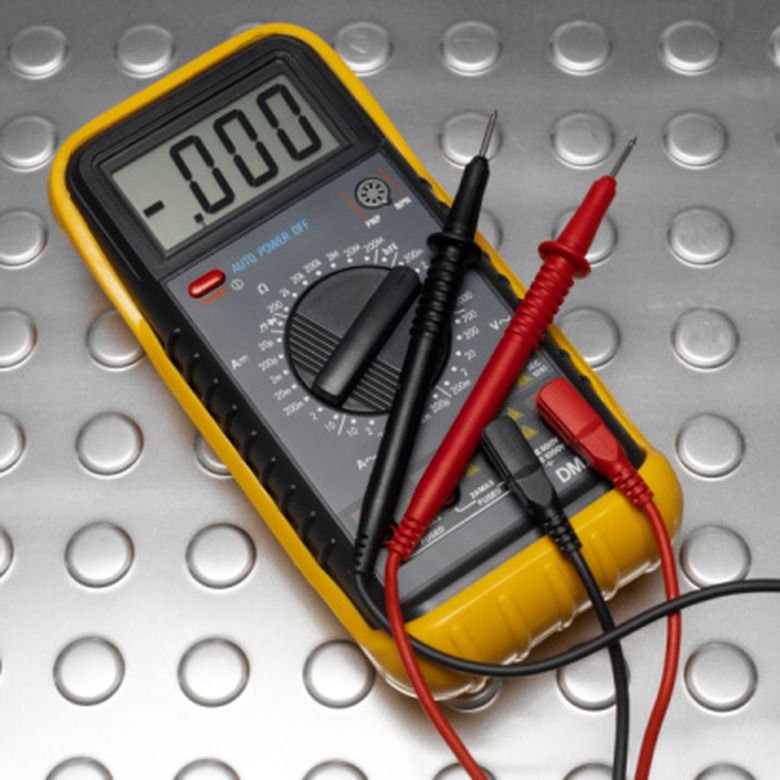How To Test Miller Welder Diodes
Consider testing the diodes in a Miller welder if you experience power problems with the device. Finding a faulty diode in the welder before failure provides time to attain replacement parts. Standard diodes allow electricity to only flow one direction through them. This can be helpful in alternating current (AC) where electricity changes direction. More specifically, the four, rectangular plate diodes in a Miller welder are also rectifiers. Rectifier diodes also change AC current into direct current (DC) for use during welding. Each diode has a positive terminal on one side of its plate and a negative on the other.
Step 1
Turn on the digital multimeter and move the measurement dial to the resistance setting. Sometimes the resistance setting is denoted by the capital Greek letter omega. Capital omega stands for the unit of resistance, the ohm. Resistance measures how well a device blocks the flow of electricity.
Step 2
Unplug the Miller welder. Remove all screws from its base so its top cover may be removed. Carefully lift the cover off and set it aside.
Step 3
Locate the rectifier diodes on the interior wall of the Miller welder case beside the power cord. The four diodes sit vertically and are parallel to one another. The negative terminals of the diodes face the case wall containing the power cord.
Step 4
Touch the red (positive) probe of the multimeter to the positive terminal of the diode closet to the welder case interior. Touch the black (negative) probe of the multimeter to the negative terminal of the same diode. The multimeter should read a resistance between 0 and 1 ohm, or the diode is faulty.
Step 5
Touch the red (positive) probe of the multimeter to the negative terminal of the diode closet to the welder case interior. Touch the black (negative) probe of the multimeter to the positive terminal of the same diode. The multimeter should read a resistance of infinity meaning it blocks all current flow. If the multimeter reads a different value, the diode needs replaced. Test the other three diodes in the welder in the same fashion.
Things Needed
- Digital multimeter
- Screwdriver
References
- Electronics Club: Diodes
- "Physics for Scientists and Engineers with Modern Physics"; Raymond A. Serway and John W. Jewett; 2009
Cite This Article
MLA
Hirsch, William. "How To Test Miller Welder Diodes" sciencing.com, https://www.sciencing.com/test-miller-welder-diodes-8046199/. 24 April 2017.
APA
Hirsch, William. (2017, April 24). How To Test Miller Welder Diodes. sciencing.com. Retrieved from https://www.sciencing.com/test-miller-welder-diodes-8046199/
Chicago
Hirsch, William. How To Test Miller Welder Diodes last modified March 24, 2022. https://www.sciencing.com/test-miller-welder-diodes-8046199/
